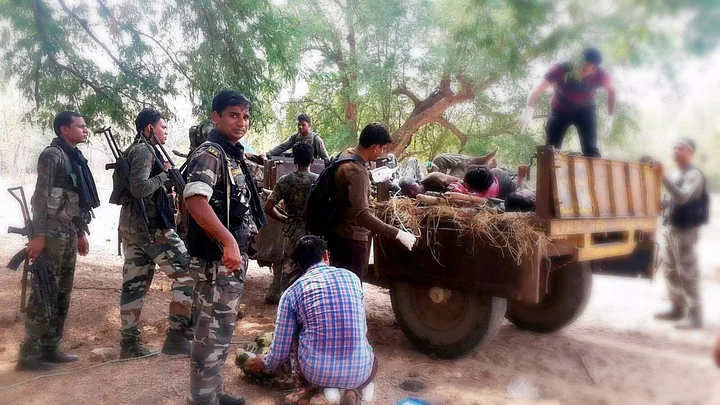Speaking to the media after the recent Maoist ambush in Sukma which killed 25 CRPF men, Union Home Minister Rajnath Singh agreed that if needed, the government would adopt a new strategy to tackle red terror.
A look at his ministry’s data tells us that the 24 April attack was the biggest on the CRPF since Prime Minister Modi took office. In fact, it was the biggest Maoist ambush in seven years.
The attack heralds the end of our complacency in the knowledge that the red corridor is shrinking.
So what does Monday’s attack in Sukma tell us about what we need to change in our counter-insurgency strategies?
The above data, which shows an increase in the number of Maoist surrenders and killings in the last four years, indicates a strengthening of security in Maoist-affected areas.
Red Corridor Shrinking, But...
While the bigger picture looks encouraging, according to the MHA data, certain areas continue to bear the brunt of the Maoist insurgency.
Among them is Sukma, in Chhattisgarh’s South Bastar region. Since 2014, most of the significant Maoist attacks have taken place in in this district.
Chintagufa and Chintalnar (in Sukma) have virtually always been their (the Maoists’) capital since 1982-83. They have controlled this area effectively and have been running a parallel government here.Vishvaranjan, former DG, Chhattisgarh, to The Quint
The CRPF, as is evident by looking at the Sukma attack, needs to be better equipped to tackle Maoists in their core areas. If they (the CRPF) enter the area in a casual manner, then there will be a higher chance of more police casualties.Vishvaranjan, former DG, Chhattisgarh, to The Quint
New Leadership Replacing the Old
The Sukma ambush was led by 32-year-old Hidma, the current chief of the People’s Liberation Guerrilla Army (PLGA) Battalion 1.
Cautioning against Hidma’s tactical and strategic prowess, Vishvaranjan, Chhattisgarh’s former DG, says that he needs to be dealt with carefully.
Hidma has surfaced as the face of a new leadership that is emerging after a dwindling older leadership.
Last week, CPI-Maoist figurehead, Narayan Sanyal, succumbed to cancer at a south Kolkata hospital.
At the time of his arrest in December 2005, Sanyal was considered second only to the CPI-Maoist’s present General Secretary, Lakshmana Mupalla Rao.
Another top leader of the CPI-Maoist, Kishenji, was killed in a Jangalmahal encounter in 2011. Kishenji’s death sounded the death knell for the Maoist movement in Jangalmahal.
Moreover, in November 2016, a joint operation in Odisha’s Malkangiri district killed many Maoist leaders, including state committee members B Venkataramna and Krishnaiah.
Among those killed was Munna, the son of Ramakrishna, the secretary of the state committee of the CPI-Maoist.
Around the same time last year, as many as 57 Maoists and 297 sympathisers allegedly turned themselves in to the Chhattisgarh police. Seventeen of these Maoists are thought to have borne a cash reward on their heads.
When old leadership moves away, younger members are promoted to those ranks. So there is no question of declining leadership. Of course, some important leaders like Sanyal have either been neutralised or eliminated by security or no more due to illness.DM Awasthi, Chhattisgarh’s Special DG (Anti Naxal Operations) to The Quint
Bigger Attacks, a Cry for Relevance?
It has been widely claimed that sizeable attacks, especially in the Maoist epicentres, are a way to gain attention and to reassert their existence. Also, it appears that the rebel forces are attacking regions in which roads are being built, as was the case with the recent Sukma attack.
The Maoists are attacking road-building projects, which are supervised by the CRPF. They are worried that new roads will lead the CRPF into their core areas. These attacks are acts of desperation. They are trying to regain control.Rahul Pandita, Journalist and Author, Hello Bastar
(At The Quint, we question everything. Play an active role in shaping our journalism by becoming a member today.)
